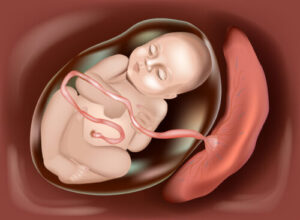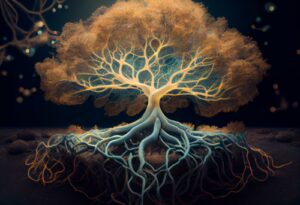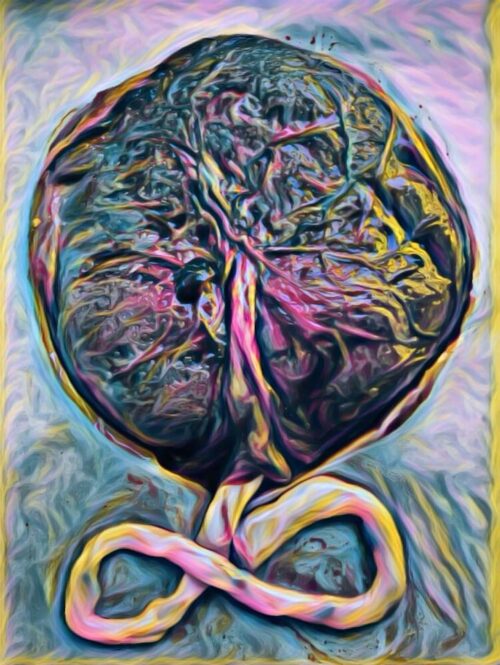The placenta, what an incredible organ.
Mother and baby’s first project that they work on together to sustain and bring forth life. The placenta gives the baby everything it needs to be able to grow, thrive and survive whilst in fluid for three quarters of a year. The amniotic fluid is what the baby lives in, which is inside the uterus. But, we have of course, all wondered… how does the baby breathe? How does the baby eat? How does the baby get rid of waste?
This is where the common project between the mother and child come in and they work together to find a solution: the placenta. The placenta plays the role of lifeline to support the process of pregnancy and provides a beautiful connection between the mother and the baby.
Over the course of a woman’s pregnancy, the placenta grows from a few cells to an organ that will eventually weigh around 1 pound! Between 8 – 12 weeks, as every pregnancy and woman is different, the placenta is fully formed and is ready to start operating in its full capacity to nourish and provide oxygen and nutrients for the baby. Under normal conditions, the placenta will attach itself to the wall of the mother’s uterus. As the pregnancy progresses, it will move with the growing uterus. The umbilical cord is the connecting point between mother and baby and provides necessary nutrients, antibodies and oxygen to the baby. It also works in reverse to send waste and carbon dioxide from the baby back to the mother. The placenta also acts as a safeguard, keeping mother and baby’s blood separate from each other, which plays an integral role in keeping bacteria and viruses out of the womb, protecting the baby.

When the placenta is forming, the baby sends vessels to it so there’s a point of connection. The vessels are two umbilical arteries and one umbilical vein that, when cut and observed as a cross section, look like a little smiley face. The arteries and vein are encased in a substance called Wharton’s Jelly. From the outside of the placenta, blood vessels come up and into the uterus, letting in oxygen. There are also veins that go through a layer of tissue that’s on the inside of the uterine wall; this tissue is called the Basel Plate. The Basel Plate is the mother’s side of the placenta. The blood for the baby comes up through the arteries, from the mother and circulates back down through into the veins, like a swirling pool. These blood cells are red blood cells, and they carry the oxygen and nutrients that the baby needs.
The baby will send their own arteries and vein (the umbilical cord) into the “swirling pool” of red blood cells. The umbilical arteries will branch out and attach themselves to the baby’s side of the placenta, and the tissue on that side of the placenta is called the Chorionic Plate.
The arteries that have branched out look similar to the root system of a tree, hence why the placenta has been referred, to over the years, as “the tree of life” and the similarities in appearance. These arteries “push” into the “swirling pool” of red blood cells. These particular arteries are called Trophoblasts, (from Greek – ‘threphein’: to feed; and ‘blastos’: germinator) and they carry their own blood cells which are in close contact with the mother’s red blood cells so that oxygen, and nutrients, through diffusion, will go UP into the baby’s blood cells and carbon dioxide leaves the baby’s red blood cells (trophoblasts) and enters the “swirling pool” as waste. The baby’s red blood cells they have pushed through the Chorionic Plate and into the “pool” are closed, so the exchange can only happen through diffusion and rich, oxygenated blood and nutrients get sent back to the baby.

In addition to being a lifeline for your baby, the placenta also secretes hormones that go directly into the mother’s bloodstream to support pregnancy and foetal growth.
As mentioned earlier, the placenta has often been referred to as “the tree of life” over many years and in many different cultures. A mother’s placenta has often received ceremonial handling by many different cultures that revere the placenta and its symbolisation of life and spirit (whenua).
In some African nations, they will wrap the afterbirth in blankets and bury it beneath a tree to symbolise the ongoing circle of life. In some Asian countries like Vietnam and China, the placenta is dried and taken with warming herbs in order to increase a persons (or mothers) energy and vitality. In Maori culture the word “placenta” and the word “land” is the same: Whenua. This highlights the beautiful and profound connection the two have to each other. The placenta is offered back to Papatuanuku (Mother Earth) usually in a place where there is ancestral connection. This act holds deep spiritual significance as the land (whenua) is a strong source of identity for Maori.

Being Māori myself, I find the placenta and the process of pregnancy incredibly deep, spiritual, mysterious and incredible. The seed that manages to fight through the perilous realm of the mana wahine to create life is worth celebrating, honouring and revering, throughout the entire process of conception, carrying and birth.
My name is Charlotte Rodgers, and I am a training doula who is studying at the Doula Training Academy with Vicki Hobbs. If you would like to connect and talk more about your birthing options, you can reach me at:
Business Name:
The Fourth Collective
Business Email:
[email protected]
Website:
www.thefourthcollective.com.au
Instagram Link:
https://www.instagram.com/thefourth.co
Phone:
0478 126 390

